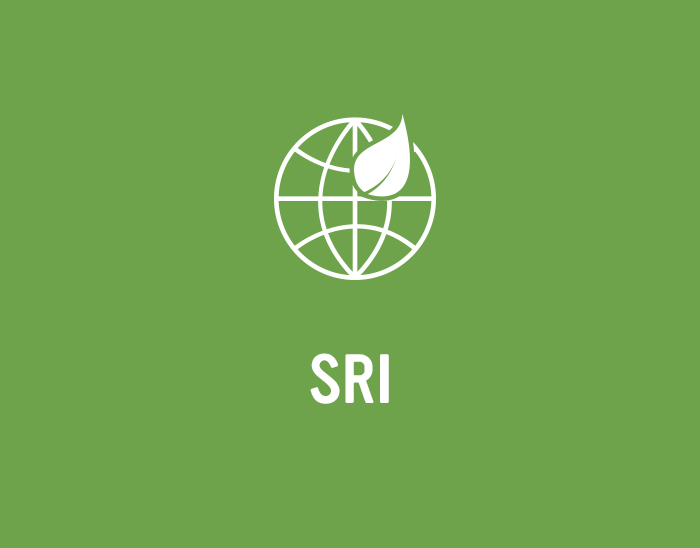
ESG derivatives: the next sustainable finance frontier
The pace of sustainable finance development is accelerating. Recent years have seen a surge in projects and purposes that focus on all environmental, sustainable and governance aspects and use a variety of formats and products. Derivatives play an important role in markets, but their use in sustainability has been a later addition, according to Melbourne-based King & Wood Mallesons partner, Anne-Marie Neagle, and lawyers Ryan Iskandar and Nelson Phan.
The role of derivatives in sustainable finance gained momentum in 2020 following the publication of an International Swaps and Derivatives Association (ISDA) sponsored report with the Centre for European Policy Studies-European Capital Markets Institute (CEPS-ECMI). This provided an overview of environmental, sustainable and governance (ESG) derivatives, finding that derivatives could help raise capital and contribute to the transition to a low carbon economy.
Momentum grew over 2021, with ISDA publishing three further papers examining specific aspects of ESG derivatives. These papers advanced ESG derivative thinking by taking a deeper dive into key accounting issues, some proposed drafting for KPIs to enhance their suitability and robustness, and the interaction between ESG derivatives and the current regulatory framework.
In May 2022, ISDA published a further white paper identifying the key role of sustainability-linked derivatives (SLDs) in the transition to a more sustainable economy, particularly given their highly customisable nature. SLDs are a relatively recent innovation in the derivatives market the first was executed in 2019 – but the format has gained significant interest from market participants.
As sustainability and ESG issues become more pressing topics for boards, investors and markets, ESG derivatives may become a key tool in meeting ESG objectives including net-zero goals. At the same time, they can further facilitate the growth of other environmentally focused financial products.
Derivatives are a key risk management tool in financial markets and an enabler of forward market information. Through these functions, derivatives have a potentially significant role to play in influencing capital allocation to better achieve the global sustainability agenda. “Derivatives enable more capital to be channelled toward sustainable investments, help market participants hedge risk related to ESG factors, facilitate transparency, price discovery and market efficiency, and contribute to long termism,” ISDA highlighted in its 2021 overview.
“SLDs are newer instruments that derive part of their value from the achievement of predefined ESG-linked targets within a certain timeframe using metric-based KPIs, such as greenhouse gas emissions. They can be used either as a standalone product or connected to sustainability-linked cash products.”
THE EVOLUTION OF DERIVATIVES
Derivatives can play a role in sustainable finance in some cases without significant evolution from their current form. There is also, however, space in this market for new formats with specific sustainability aligned features.
Even simple derivatives, such as interest rate and foreign exchange products, have the potential to assist in the mobilisation of capital toward sustainability purposes by continuing their current role in providing protection against traditional financial risks arising in sustainable finance transactions. However, specific types of derivatives can have a more targeted impact on sustainable finance.
Credit derivatives can be used to mitigate the credit exposures inherent in a sustainable investment and, in doing so, provide support for the allocation of credit to ESG-aligned entities and projects. Sustainable entities and projects can benefit from lower exposure to physical transition risks arising from climate change. A forward-looking credit lens – such as that used in credit derivative risk assessments – can price this benefit into the cost of credit protection.
A market for ESG-aligned credit derivatives also provides an opportunity for sellers of credit protection to invest in the underlying sustainable credit by taking positions in ESG-related credit derivatives. The development of this market can further improve risk pricing transparency in sustainable entities and projects, in turn supporting the allocation of capital to the underlying ESG-aligned sector.
Opportunities to increase exposure to ESG-aligned entities, projects and indices can also be obtained through derivative products, such as total return swaps and ESG futures and options, which offer alternative investment formats for market participants. ESG derivatives are available OTC – where more specific tailoring is available – or on exchanges.
Derivatives also play a role in the market for carbon allowances, carbon offsets and other emissions-based units by enabling secondary market trading via options, forwards and swaps over these products. Other derivatives can be tailored to hedge specific risks arising from climate change or other sustainability issues such as weather events and catastrophic natural disasters.
SUSTAINABILITY-LINKED DERIVATIVES
SLDs are newer instruments that derive part of their value from the achievement of predefined ESG-linked targets within a certain timeframe using metric-based KPIs, such as greenhouse gas emissions. They can be used either as a standalone product or connected to sustainability-linked cash products, such as loans and bonds.
As with conventional derivatives, SLDs can hedge interest rate risk while incentivising companies to incorporate sustainability and environmental impacts into their business practice.
Like sustainability-linked bonds and loans, SLDs do not limit the use of proceeds to specific ESG purposes but add an ESG outcome-linked feature, such as an ESG pricing component, to a conventional derivative. ISDA’s SLD white paper gives several use cases, including:
- An ESG target-driven adjustment to cash flows, such as an upward or downward adjustment to the spread applied to an interest rate.
- A fee or rebate in the cash flows.
- An obligation for one counterparty to make a sustainability-aligned charitable payment or donation depending on whether ESG targets are met.
- Requiring one counterparty to provide funding to the other for certain ESG projects if ESG targets are met.
In other words, SLDs are able to offer the same benefits as conventional derivatives while also facilitating sustainability-focused conduct.
“As with other sustainability-aligned products, participants should, among other things, ensure that disclosures relating to ESG derivatives are clear, well-substantiated, contextually appropriate and based on reasonable grounds to mitigate against greenwashing risks.”
REGULATION AND RISK
Under current frameworks, ESG derivatives – where they retain their legal characterisation as a derivative – will likely be treated similarly to other conventional derivatives. In general terms, this means ESG derivatives may be subject to licensing requirements, mandatory reporting rules and other applicable derivatives-specific legislation and standards. However, greater assessment of the legal characterisation of an ESG derivative may be required depending on the features included.
ESG derivatives, like other derivatives, should also be assessed against applicable gaming and wagering provisions and against insurance characterisation criteria. Depending on their structure and form, these issues may require deeper consideration, for example through an insurance lens where cash-settled risk protection instruments are used – such as credit, weather and catastrophe derivatives.
ISDA has also highlighted in its regulatory considerations paper that, where an SLD relies on ESG-specific KPIs that reference or incorporate indices, this could be classified and regulated as a “benchmark” and subject to specific regulation in certain jurisdictions.
With increased focus on ESG performance and products, regulators have also warned that issuers of sustainability-related products should consider potential greenwashing practices.
In this context, greenwashing refers to practices such as gaining an unfair competitive advantage by marketing a financial product as environmentally – or socially – friendly when, in fact, basic environmental or social standards have not been met. This can occur, for example, when participants exaggerate the green or other credentials of a financial product or project or set unrealistic targets they are unable to meet.
As with other sustainability-aligned products, participants should, among other things, ensure disclosures relating to ESG derivatives are clear, well-substantiated, contextually appropriate and based on reasonable grounds to mitigate against greenwashing risks.
Participants in SLD markets should also carefully consider whether their chosen KPIs are sufficiently relevant to their business and ESG strategy, and sufficiently ambitious to create meaningful impact.
SLDs are relatively new to the market and transparency of market practice is limited. However, issuers that fail to carry out adequate due diligence on what is appropriate when setting relevant KPIs, and how to verify performance against those KPIs, may face scrutiny from investors and potential reputational risks.
WHERE NEXT?
Sustainability remains a focus area for regulators globally and it is clearly within the sights of Australian regulators. In addition to ensuring market participants understand that sustainability risks create financial, prudential and even systemic risks, regulators are also focused on ensuring the actions of market participants in sustainable finance do not undermine the reputation or integrity of the sustainability agenda.
We expect participants and regulatory bodies will continue to focus on appropriate standardisation and benchmarks as markets develop best practice in the evolving ESG derivatives area. Nevertheless, ESG derivatives may become an essential item in the sustainability toolkit for those seeking to increase their ESG offerings and further commit to sustainability goals.

WOMEN IN CAPITAL MARKETS Yearbook 2023
KangaNews's annual yearbook amplifying female voices in the Australian capital market.













